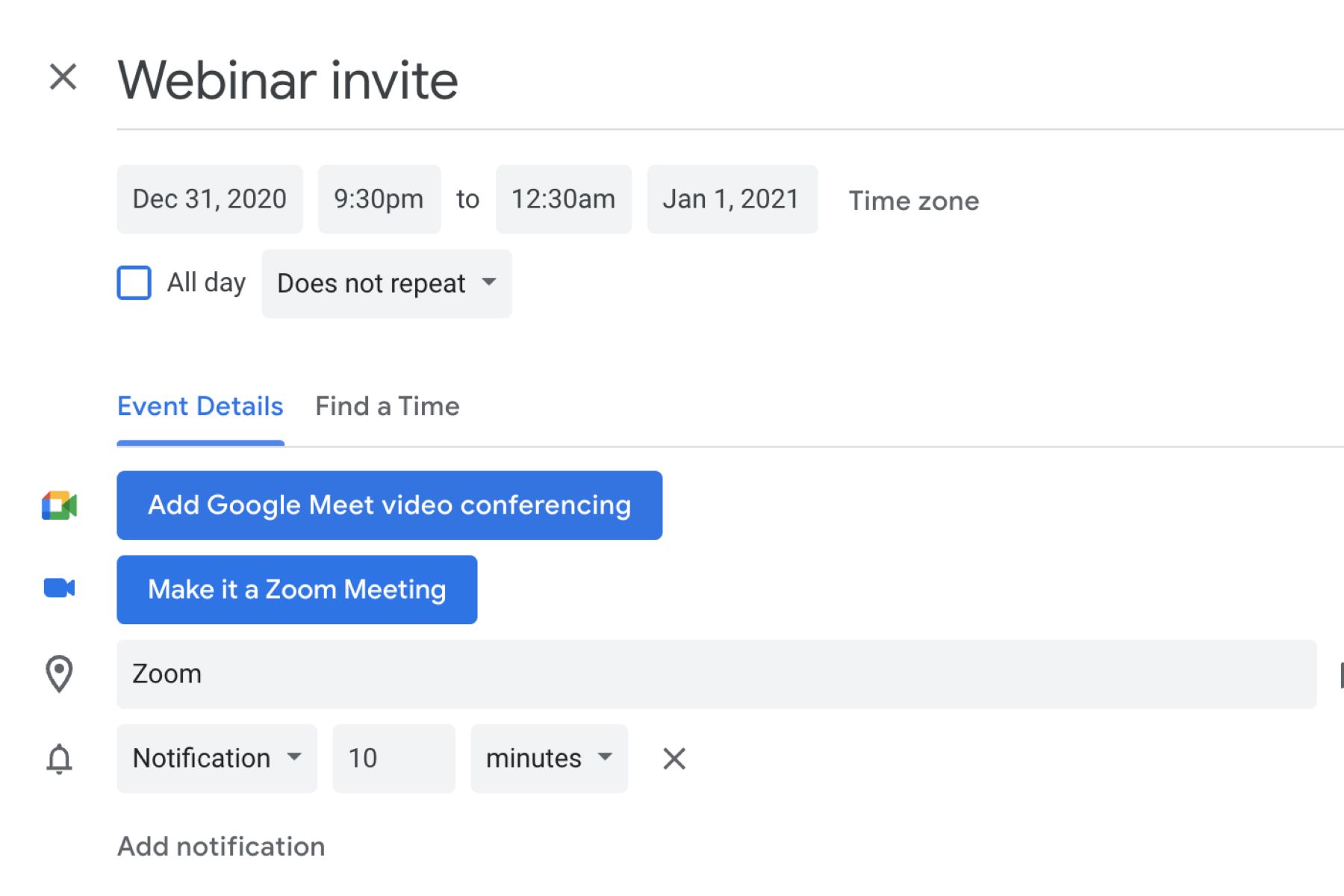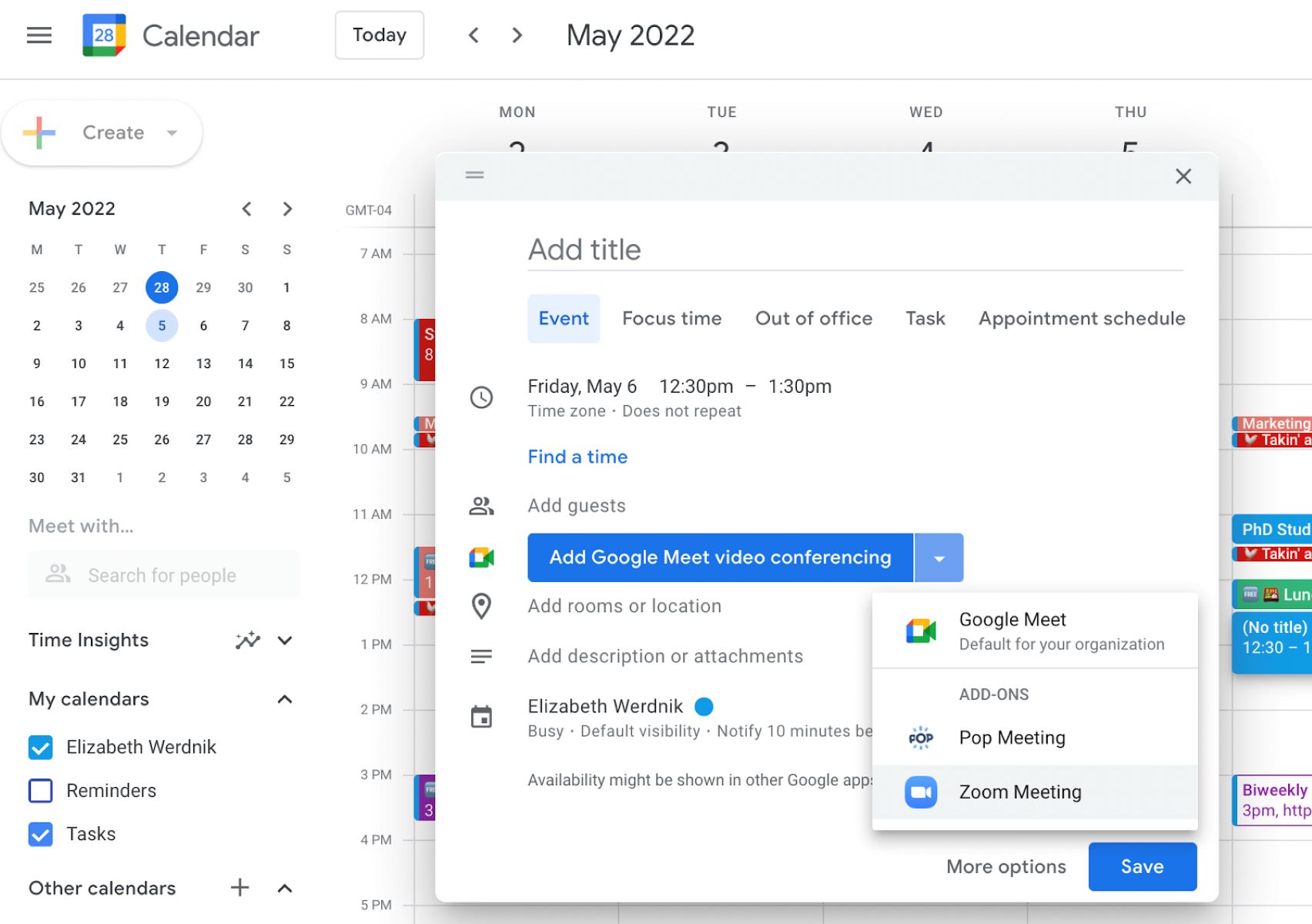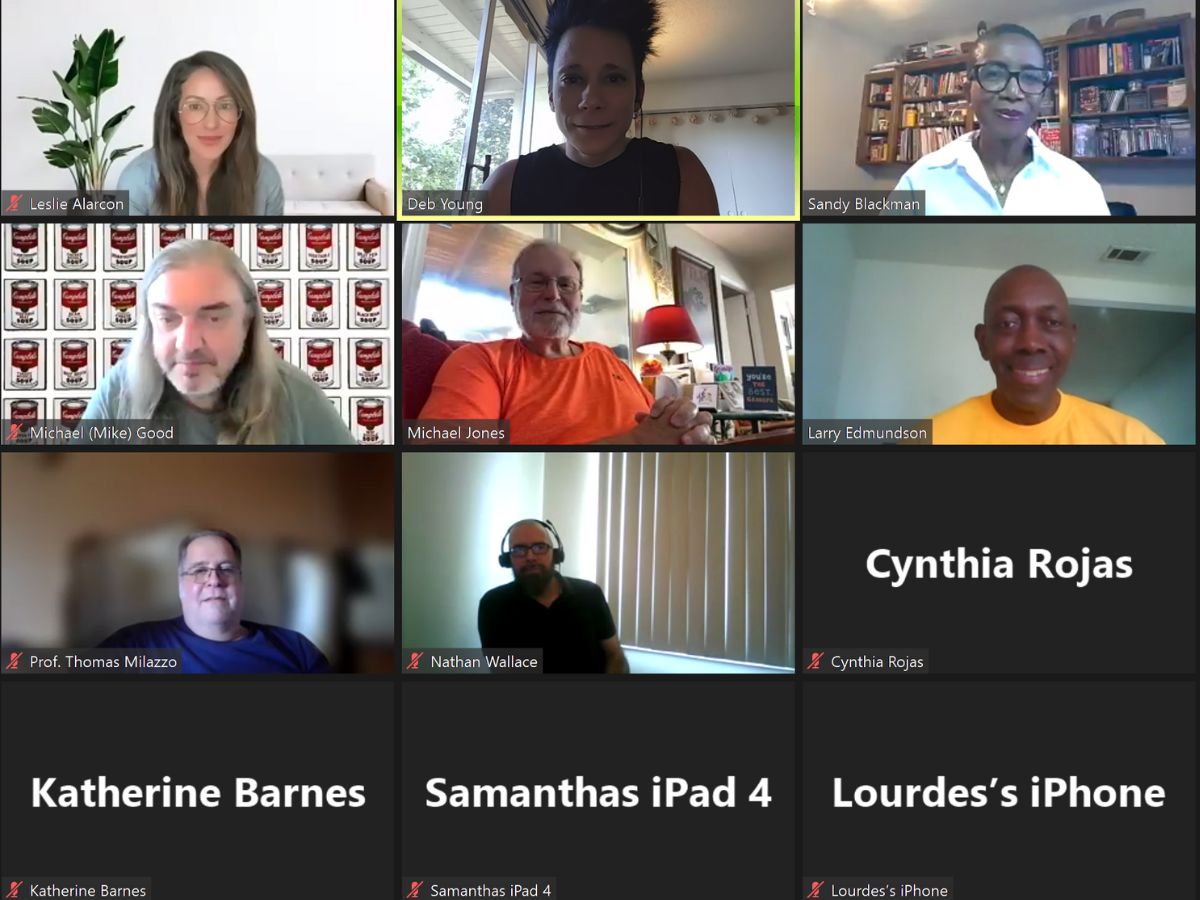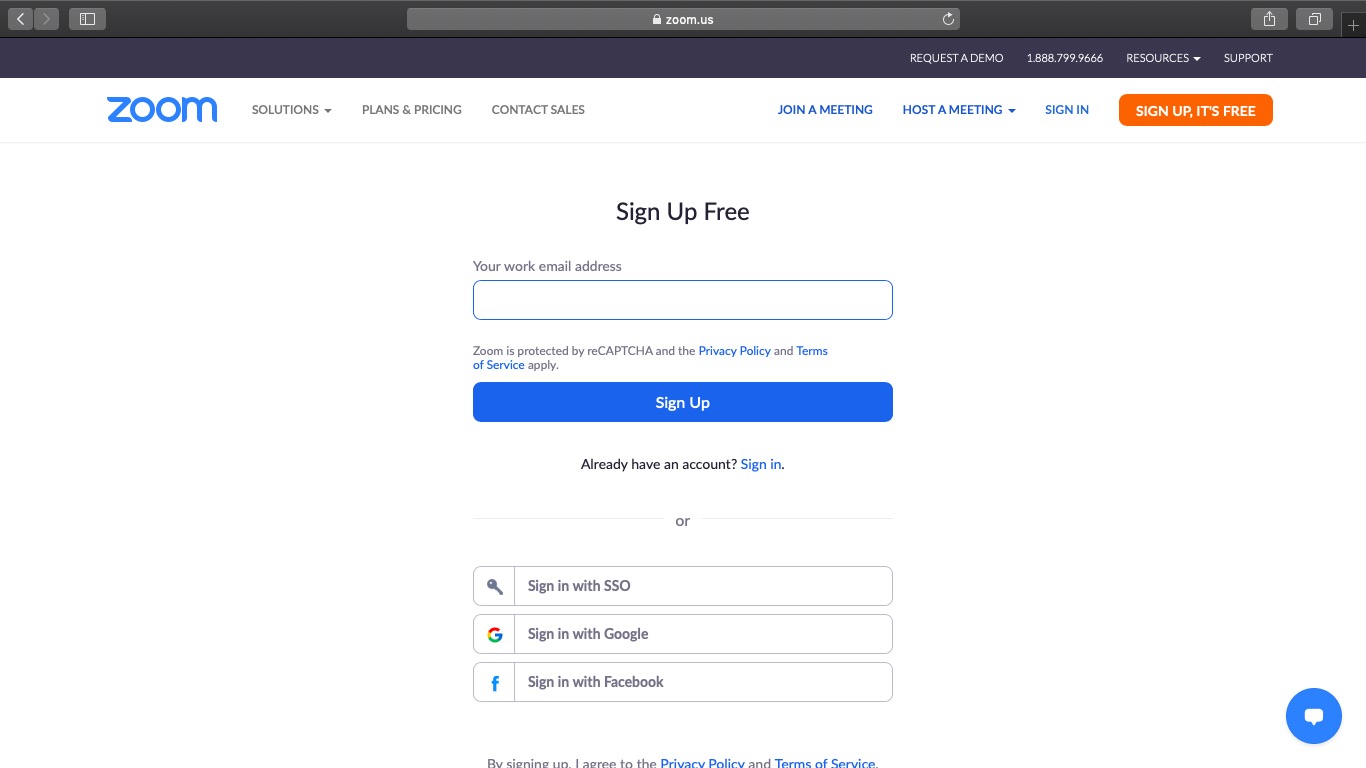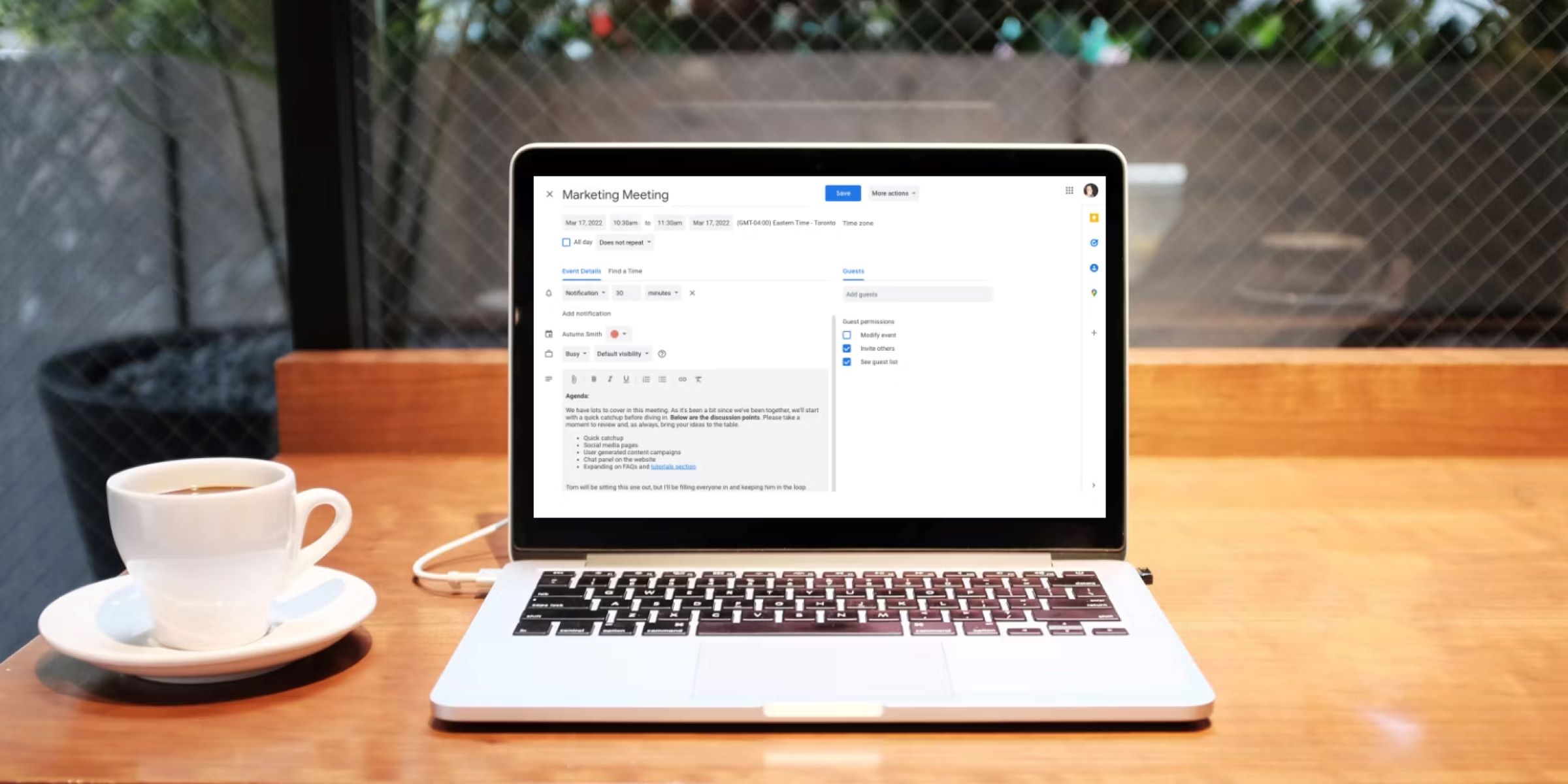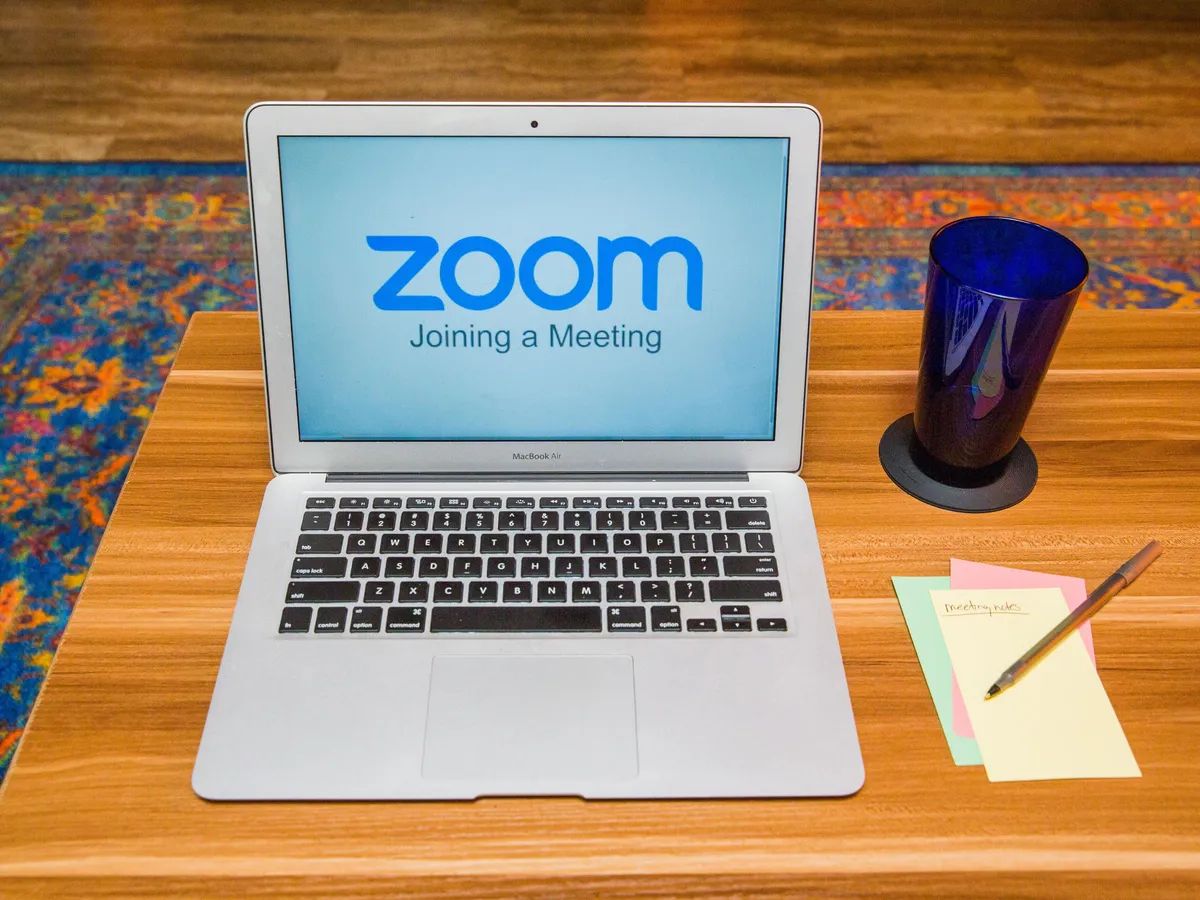Introduction
As virtual meetings and online collaborations become more and more common, having the ability to seamlessly integrate video conferencing platforms like Zoom into your calendar invites is essential. Google Calendar, widely used for scheduling meetings and events, allows you to add Zoom to your invites, making it easier for participants to join your virtual meetings.
In this article, we will walk you through the step-by-step process of adding Zoom to your Google Calendar invites. Whether you are organizing a business meeting, a team huddle, or a virtual event, this guide will help you streamline the scheduling process and enhance your overall productivity.
By integrating Zoom with Google Calendar, you can easily schedule meetings, generate unique meeting links, and automatically populate the meeting details in your calendar invites. This eliminates the need for manual entry and ensures that all participants have the necessary information to join the meeting at the designated time.
Whether you are new to Zoom or an experienced user, our comprehensive tutorial will guide you through the entire setup process. Follow our step-by-step instructions and start leveraging the power of Zoom and Google Calendar for seamless scheduling and better virtual communication.
So, let’s dive in and explore how you can add Zoom to your Google Calendar invites.
Step 1: Install the Zoom App
The first step in adding Zoom to your Google Calendar invites is to install the Zoom app on your preferred device. Zoom is compatible with Windows, macOS, Linux, iOS, and Android, making it accessible across various platforms.
To begin, open your web browser and visit the Zoom website at https://zoom.us/. On the homepage, locate the “Resources” menu and click on “Download Zoom”.
Once you are redirected to the download page, choose the appropriate Zoom client for your device and click on the download link. The installation file will begin downloading.
After the download is complete, locate the installation file on your device and double-click on it to start the installation process. Follow the on-screen instructions to install the Zoom app.
Once the installation is complete, launch the Zoom app and sign in with your Zoom account credentials. If you don’t have a Zoom account, you can sign up for free by clicking on the “Sign Up” button on the Zoom homepage.
That’s it! You have successfully installed the Zoom app on your device. Now you are ready to link your Zoom account with Google Calendar and start adding Zoom meetings to your calendar invites.
Note: If you prefer to use the web version of Zoom instead of installing the app, you can access Zoom directly from your web browser. However, for a more seamless experience and access to all the features, we recommend installing the Zoom app.
Step 2: Link Zoom Account with Google Calendar
After installing the Zoom app, the next step is to link your Zoom account with Google Calendar. This integration will allow you to directly schedule Zoom meetings and automatically add them to your Google Calendar invites.
To begin, open the Zoom app on your device and sign in with your Zoom account credentials.
Once you are logged in, navigate to the settings by clicking on your profile picture in the top right corner and selecting “Settings” from the dropdown menu.
In the settings menu, go to the “Integration” tab and locate the “Google Calendar” option. Click on “Authorize” to connect your Zoom account with Google Calendar. You will be redirected to a Google sign-in page.
Sign in with your Google account credentials that are associated with your Google Calendar. Grant the necessary permissions for Zoom to access your calendar information.
Once you have successfully authorized the Zoom app, you will receive a notification confirming the successful integration between Zoom and Google Calendar.
Now, when you create a Zoom meeting, it will automatically sync with your Google Calendar. You no longer have to manually add the meeting details to your calendar invites; Zoom will take care of it for you.
Additionally, this integration allows you to view, manage, and join your Zoom meetings directly from Google Calendar. Any changes or updates made to the Zoom meeting within Google Calendar will be reflected in your Zoom app as well.
That’s it! You have successfully linked your Zoom account with Google Calendar. You are now ready to start creating Zoom meetings and adding them to your Google Calendar invites effortlessly.
Step 3: Create a Zoom Meeting
Now that you have linked your Zoom account with Google Calendar, it’s time to create a Zoom meeting. This will generate a unique meeting link and provide you with the necessary details to add to your Google Calendar invite.
To create a Zoom meeting, open the Zoom app and sign in with your Zoom account credentials.
Once you are logged in, click on the “New Meeting” button on the home screen. Alternatively, you can click on the “Schedule” option to set up a meeting for a later date.
If you clicked on “New Meeting,” a Zoom meeting will be immediately generated, and the meeting details will be displayed on the screen. You can use these details for impromptu meetings or share them with others to join the meeting.
If you clicked on “Schedule,” you will be prompted to enter the meeting details, such as the topic, date, time, and duration of the meeting. You can also choose to enable video and audio options, set a password, and enable other meeting settings.
Once you have entered the meeting details, click on the “Save” button. The Zoom meeting will now be scheduled, and the meeting details will be available for you to add to your Google Calendar invite.
Remember to take note of the meeting ID and the unique meeting link that Zoom provides. These will be needed to join the meeting, and you can also share them with participants via your Google Calendar invite.
You can create multiple Zoom meetings and schedule them according to your needs. The integration with Google Calendar ensures that all the meetings are automatically synced and reflected in your calendar.
Creating Zoom meetings allows you to have a centralized platform to manage all your virtual meetings and share the meeting details efficiently.
That’s it! You have successfully created a Zoom meeting. The next step is to add the Zoom meeting to your Google Calendar invite, ensuring that all participants have the necessary information to join the meeting.
Step 4: Add Zoom Meeting to Google Calendar Invite
Now that you have created a Zoom meeting, the next step is to add it to your Google Calendar invite. By doing so, all participants will have the necessary information and can easily join the Zoom meeting at the scheduled time.
To add a Zoom meeting to your Google Calendar invite, follow these steps:
- Open your preferred web browser and navigate to Google Calendar.
- Click on the “Create” button to create a new calendar event.
- In the event details, enter the title and description of your event as you would for any other calendar invite.
- Scroll down to the “Add conferencing” section and click on the “Add Zoom Meeting” option.
- Google Calendar will automatically generate a unique meeting link and add it to the event details.
- If you have multiple Zoom accounts linked to your Google Calendar, select the desired Zoom account from the dropdown menu.
- Choose the appropriate options for video and audio settings. You can enable or disable video and audio for the Zoom meeting.
- Click on the “Save” button to save the event and add the Zoom meeting to your Google Calendar invite.
Once the Zoom meeting is added to the event, all participants will be able to click on the meeting link in the invite to join the Zoom meeting directly from their Google Calendar.
It is important to note that participants who are not using Google Calendar can still join the Zoom meeting by using the meeting link and meeting ID provided in the invite.
By adding the Zoom meeting to the Google Calendar invite, you ensure that all participants have easy access to the meeting details and can join the meeting with just a few clicks.
That’s it! You have successfully added the Zoom meeting to your Google Calendar invite. The final step is to send the invitation to all participants.
Step 5: Send the Invitation
Once you have added the Zoom meeting to your Google Calendar invite, the final step is to send the invitation to all the participants. By doing so, you ensure that everyone receives the meeting details and can join the Zoom meeting smoothly.
To send the invitation, follow these steps:
- Review the event details in your Google Calendar invite to ensure accuracy.
- Add any additional participants to the invite by entering their email addresses in the “Guests” field.
- If needed, modify the date, time, or any other details of the event.
- Write a concise and informative message in the email section of the invite to provide any additional instructions or details regarding the meeting.
- Click on the “Send” button to send the invitation to all participants.
By sending the invitation, participants will receive an email notification containing the details of the Zoom meeting along with the Google Calendar invite. They will be able to access the meeting link, meeting ID, and other relevant information directly from their email.
Participants who are using Google Calendar can easily accept the invitation and have the event added to their own calendars.
It is recommended to send the invitation well in advance to allow participants to plan and prepare for the Zoom meeting. Include any specific instructions or preparations that participants need to be aware of, such as installing the Zoom app or creating a Zoom account.
It’s also a good practice to follow up with reminders closer to the meeting time, ensuring that participants have the meeting details readily available.
That’s it! You have successfully sent the invitation for your Zoom meeting. Participants will now have all the necessary information and can join the meeting at the scheduled time.
By seamlessly integrating Zoom with Google Calendar, you have made scheduling and managing virtual meetings a breeze. Enjoy the enhanced productivity and streamlined communication that comes with using Zoom and Google Calendar together.
Conclusion
Adding Zoom to your Google Calendar invites is a simple yet powerful way to streamline your virtual meetings and improve productivity. By following the steps outlined in this guide, you can seamlessly integrate Zoom with Google Calendar and ensure that all participants have easy access to the meeting details.
From installing the Zoom app and linking your Zoom account with Google Calendar to creating Zoom meetings and adding them to your invites, each step is designed to simplify the scheduling process and enhance communication.
With the Zoom app installed on your device, you can create and manage Zoom meetings with ease. The integration with Google Calendar eliminates the hassle of manually adding meeting details and ensures that all participants receive the necessary information.
By sending the invitation to all participants, you enable them to join the Zoom meeting smoothly and make the most out of their virtual collaboration experience. Including any additional instructions or details in the email section of the invite can further enhance the meeting process.
Remember to take advantage of the Zoom and Google Calendar integration by using the meeting link, meeting ID, and other features provided. This will enable all participants, even those who do not use Google Calendar, to join the Zoom meeting effortlessly.
By leveraging the power of Zoom and Google Calendar, you can create a seamless and efficient virtual meeting experience. Stay organized, save time, and maximize productivity by using this powerful combination of tools.
So, whether you’re scheduling business meetings, team huddles, or virtual events, adding Zoom to your Google Calendar invites is a game-changer. Enjoy the benefits of effortless scheduling, easy access to meeting details, and improved collaboration with Zoom and Google Calendar.
Start implementing these steps today and elevate your virtual meetings to the next level with Zoom and Google Calendar integration.







